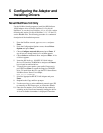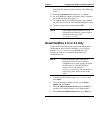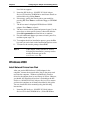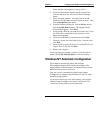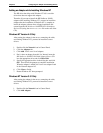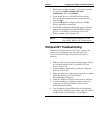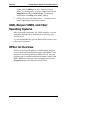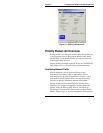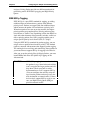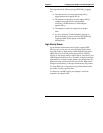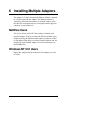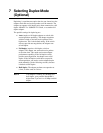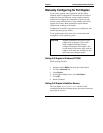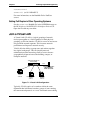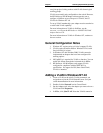
Chapter 5 Configuring the Adapter and Installing Drivers
19
and port. Priority Packet provides two different methods for
prioritizing traffic: IEEE 802.1p tagging and High Priority
Queue.
IEEE 802.1p Tagging
IEEE 802.1p is a new IEEE standard for tagging, or adding
additional bytes of information to, packets with different
priority levels. Packets are tagged with four additional bytes,
which increase the packet size and indicate a priority level.
When these packets are sent out on the network, the higher-
priority packets are transferred first. Priority packet tagging
(also known as Traffic Class Expediting) allows the adapter to
work with other elements of the network (switches, routers) to
deliver priority packets first. 802.1p tagging enables you to
assign specific priority levels from 0 (low) to 7 (high).
Using the IEEE 802.1p standard for packet tagging, you can
assign values to packets based on their priority. This method
requires a network infrastructure that supports packet tagging.
The routing devices receiving and transferring these packets on
your network must support 802.1p for tagging to be effective.
After you set up the priority filter in Priority Packet, you must
launch HPSet and select 802.1p/802.1Q Tagging on the
Advanced tab.
CAUTION IEEE 802.1p tagging increases the size of
the packets it tags. Some hubs and switches
won’t recognize the larger packets and will
drop them. Check your hub or switch
documentation to see if it supports 802.1p.
(You can configure the switch to strip the
tags from the packets and send it on to the
next destination as normal traffic.) If these
devices don’t support 802.1p or you’re not
sure, use High Priority Queue (HPQ) to
prioritize network traffic.



